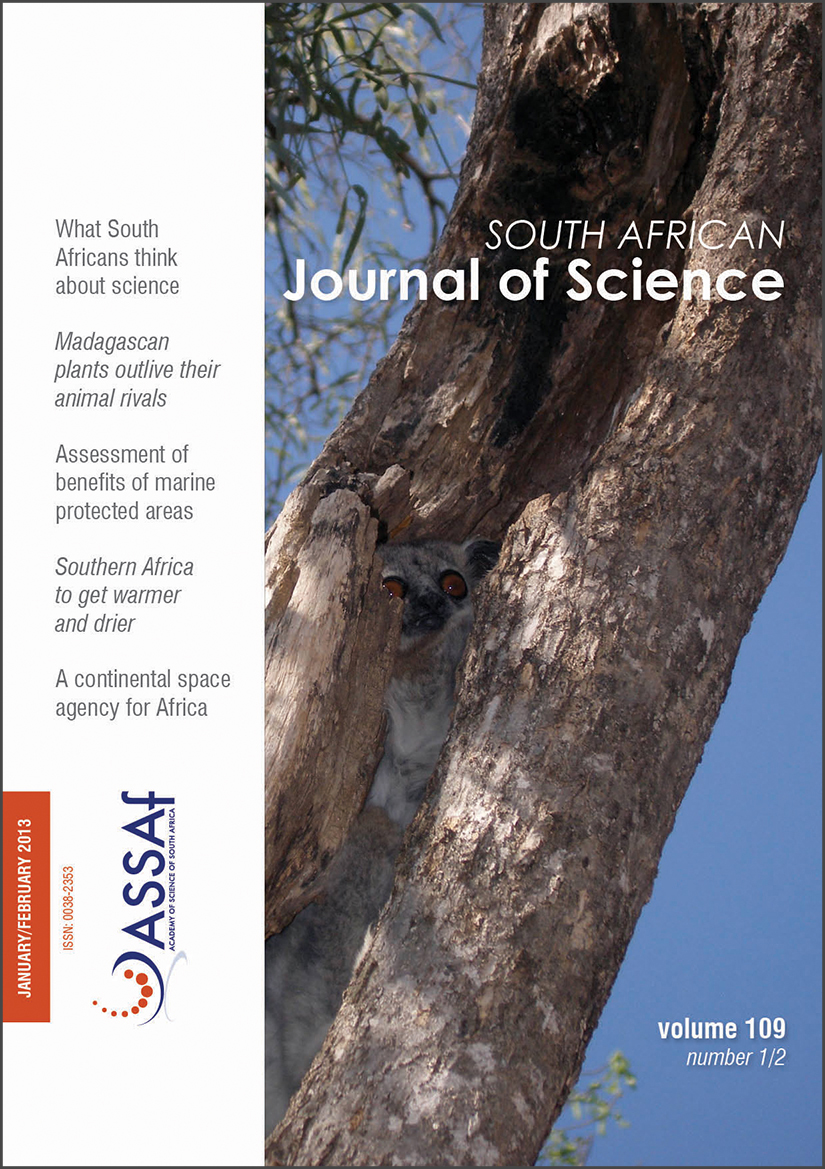Why all those spines? Anachronistic defences in the Didiereoideae against now extinct lemurs
DOI:
https://doi.org/10.1590/sajs.2013/1346Keywords:
Madagascar, lemur, crassulacean acid metabolism, δ13C, δ15NAbstract
Plants evolve physical defences, such as spines, against browsing herbivores. However, in some cases, these defences may be anachronistic because the principal consumers of protected parts of the plant are extinct. In such cases, there may be few extant species consuming heavily defended resources. Here we examine the spiny defences of Madagascar’s endemic Didiereoideae, and ask whether they may be anachronistic. To accomplish this aim, we reviewed the literature to determine which species consume these plants today, and then used stable isotope biogeochemistry to determine who may have exploited Didiereoideae in the recent past. There are four major groups of browsers that are now extinct in Madagascar: giant lemurs, elephant birds (Aepyornis and Mullerornis: Aepyornithidae), pygmy hippopotamuses (Hippopotamus) and giant tortoises (Aldabrachelys: Testudinidae). Each group was evaluated for isotopic evidence of didiereoid plant consumption. Given the structure of members of this plant clade (especially Alluaudia), we predicted that lemurs would be their most important consumers. Three extant lemur species consume Didiereoideae. Several of the extinct lemurs, particularly Hadropithecus stenognathus, may have relied heavily on these spiny plants. None of the non-lemur megafaunal browsers (elephant birds, hippopotamuses and giant tortoises) were important consumers of Didiereoideae.
Published
Issue
Section
License

All articles are published under a Creative Commons Attribution 4.0 International Licence
Copyright is retained by the authors. Readers are welcome to reproduce, share and adapt the content without permission provided the source is attributed.
Disclaimer: The publisher and editors accept no responsibility for statements made by the authors
How to Cite
- Abstract 553
- PDF 412
- EPUB 185
- XML 214
- Supplementary Material 132
- Supplementary Material References 158












.png)